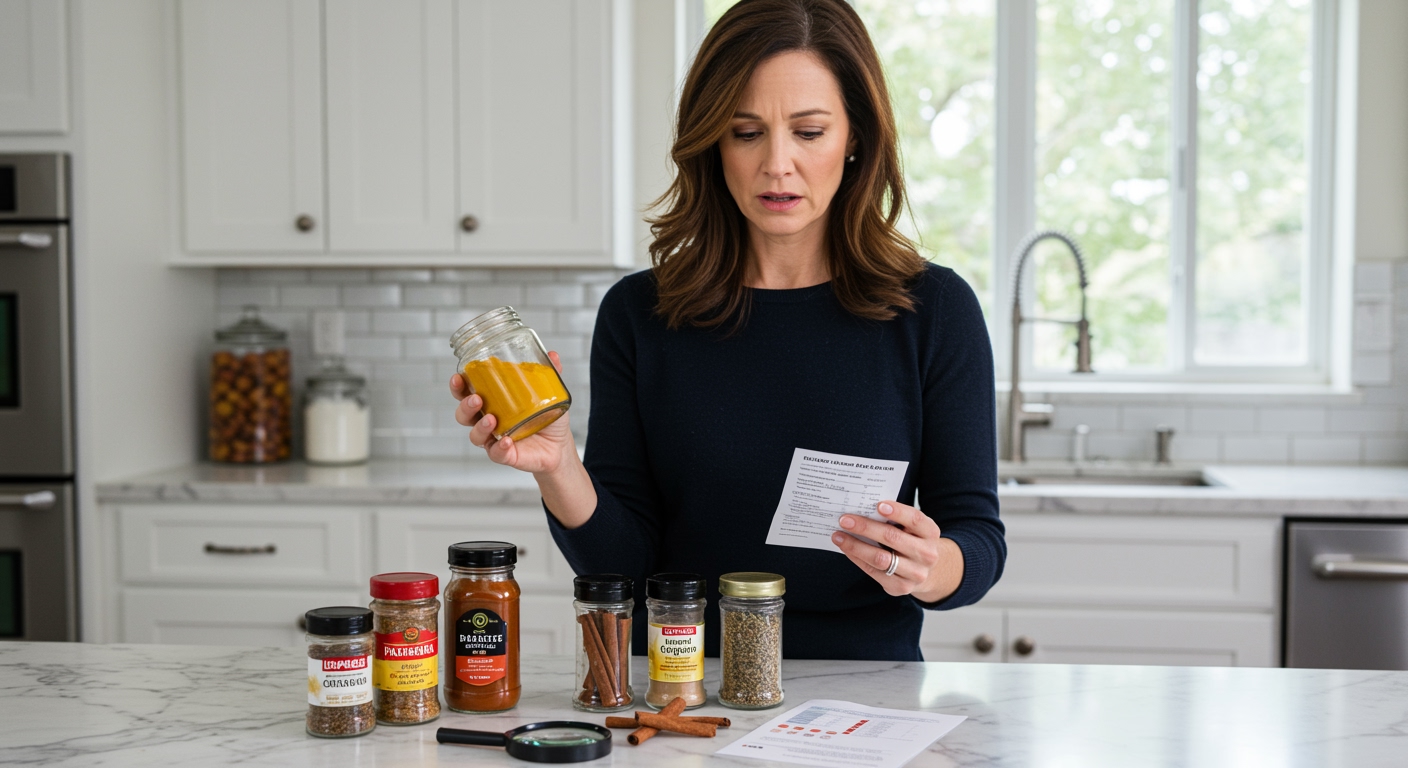✪ Key Takeaway: Common spices contain dangerous heavy metal levels that exceed safety limits and require careful sourcing.
Introduction
Last month, I received a shocking phone call from my colleague who works in food safety testing.
She told me that popular spice brands were showing contamination levels that made her stop using certain products in her own kitchen.
Hi, I’m Abdur, your nutrition coach and today I’m going to expose the hidden heavy metal contamination in everyday spices that millions of families use without knowing the health risks.
Which Spices Contain The Most Heavy Metals?
Recent testing by Consumer Reports revealed that turmeric products showed the highest contamination levels among all tested spices.
The study found that 31 out of 126 tested products contained concerning levels of lead, arsenic, and cadmium.
Turmeric powder showed lead levels up to 972 parts per billion, which is nearly 65 times higher than the maximum allowed limit for candy.
Paprika and chili powder also ranked high on the contamination list, with some samples exceeding safe limits by 300 percent.
Ground ginger, black pepper, and oregano showed moderate contamination levels, while whole spices like cinnamon sticks and peppercorns generally tested cleaner.
The contamination occurs because these spices often grow in soil that contains naturally occurring heavy metals or has been contaminated by industrial pollution.
✪ Fact: Turmeric contamination often happens when producers add lead chromate to enhance the bright yellow color.
How Do Heavy Metals Get Into Your Spices?
The contamination pathway starts in the agricultural fields where spices grow in soil that naturally contains heavy metals.
Plants absorb these metals through their root systems, concentrating them in leaves, seeds, and other plant parts that become our spices.
Industrial activities near farming areas increase contamination levels through air pollution and water runoff that deposits additional heavy metals into the soil.
Processing methods also contribute to the problem when manufacturers use contaminated equipment or add adulterants to improve color and appearance.
Some producers intentionally add lead-based compounds to turmeric and paprika to create more vibrant colors that appeal to consumers.
Storage and transportation in metal containers can introduce additional contamination, especially when spices travel long distances from production areas.
✪ Note: Organic certification does not guarantee freedom from heavy metal contamination since metals occur naturally in soil.
What Health Problems Do These Metals Cause?
Lead exposure from contaminated spices affects your nervous system, causing memory problems, difficulty concentrating, and mood changes.
Children face the highest risk because their developing brains absorb lead more efficiently than adult brains.
Even small amounts of lead can reduce IQ scores and cause learning disabilities that persist throughout life.
Arsenic contamination increases your risk of skin, lung, and bladder cancers while also causing cardiovascular disease.
Long-term arsenic exposure damages your immune system, making you more susceptible to infections and autoimmune disorders.
Cadmium accumulates in your kidneys and bones, causing kidney dysfunction and osteoporosis over time.
The combination of multiple heavy metals creates synergistic effects that amplify health risks beyond what each metal would cause individually.
✪ Pro Tip: Pregnant women should be especially cautious since heavy metals cross the placenta and affect fetal development.
How Can You Protect Your Family From Contaminated Spices?
Start by choosing whole spices over ground versions whenever possible since whole spices show lower contamination levels.
Buy from reputable companies that conduct regular heavy metal testing and publish their results publicly.
Look for spices that come with certificates of analysis showing heavy metal test results below detection limits.
Avoid buying spices from bulk bins or unknown sources where contamination history remains unclear.
Consider growing your own herbs like basil, oregano, and thyme to eliminate contamination risks entirely.
Rotate your spice sources regularly instead of always buying from the same brand or supplier to minimize cumulative exposure.
Store spices in glass containers away from metal surfaces that could introduce additional contamination.
✪ Fact: Grinding whole spices at home reduces contamination risk and provides better flavor than pre-ground versions.
The Bottom Line
Heavy metal contamination in spices represents a serious but manageable health risk that requires informed consumer choices.
Your health depends on the quality of ingredients you choose, not just the quantity you consume.
I encourage you to share your experiences with spice safety or ask questions about protecting your family from contamination in the comments below.
References
At NutritionCrown, we use quality and credible sources to ensure our content is accurate and trustworthy. Below are the sources referenced in creating this article:





